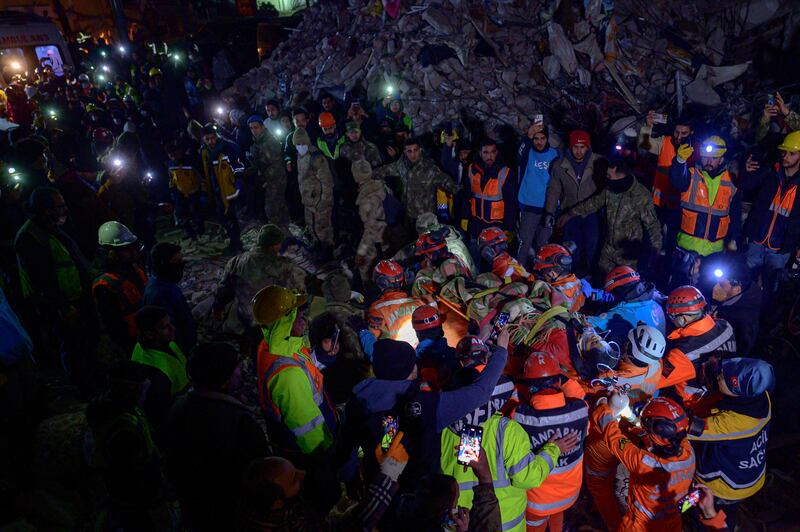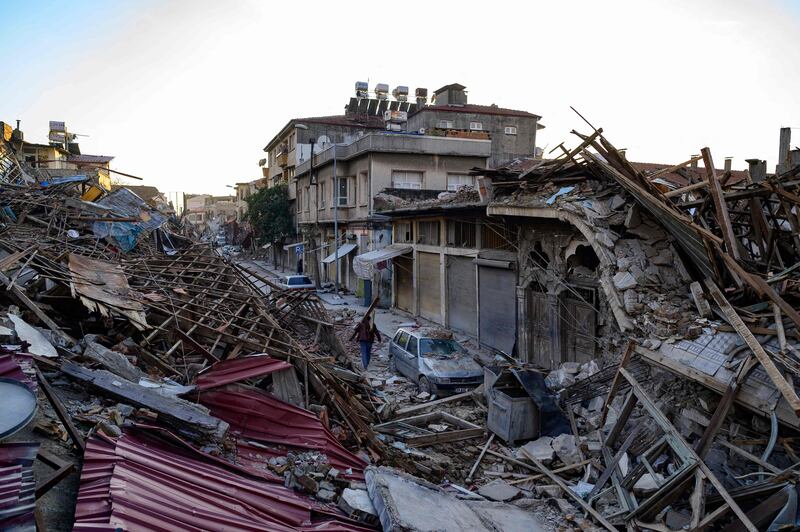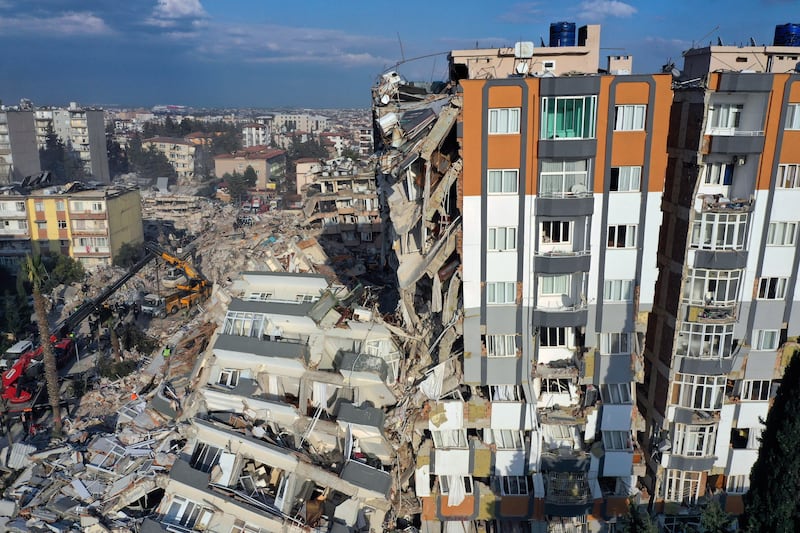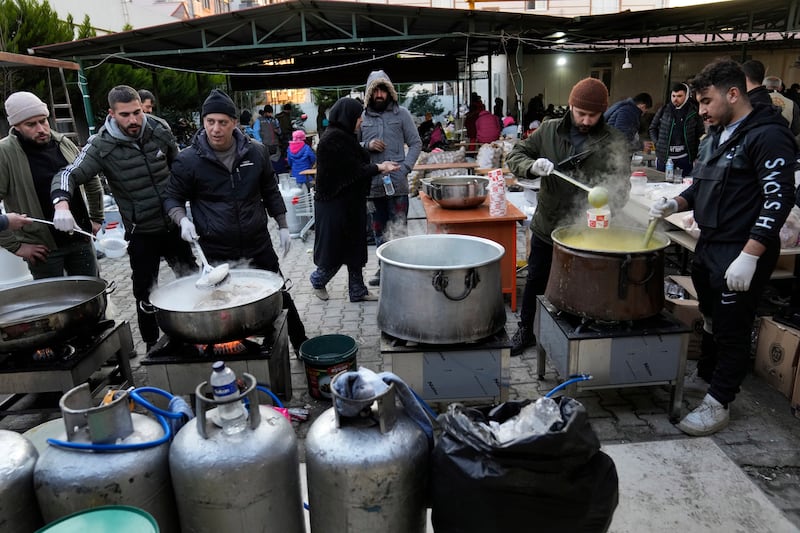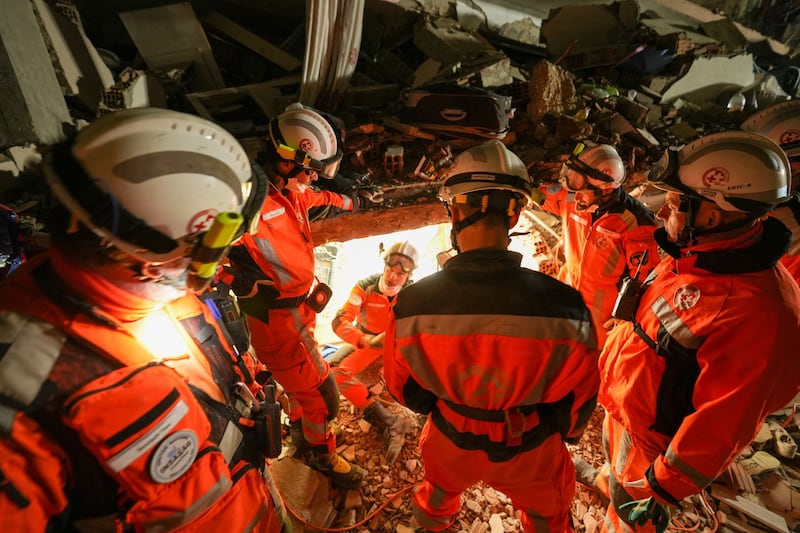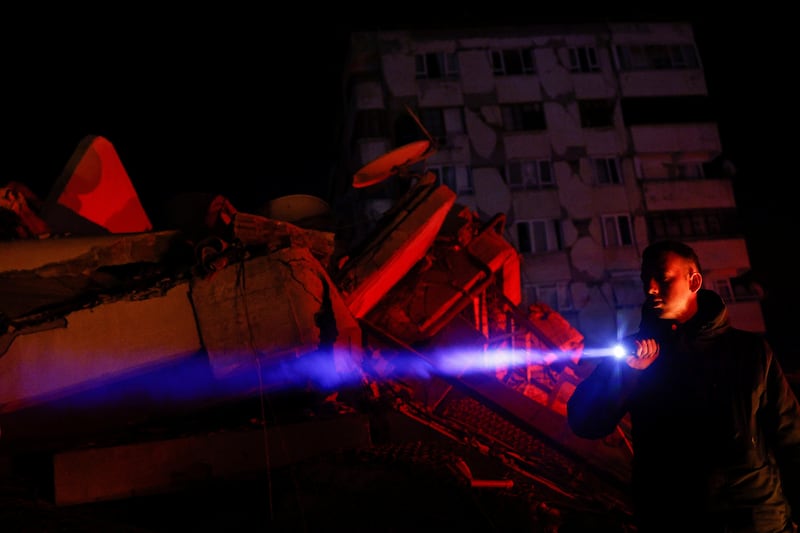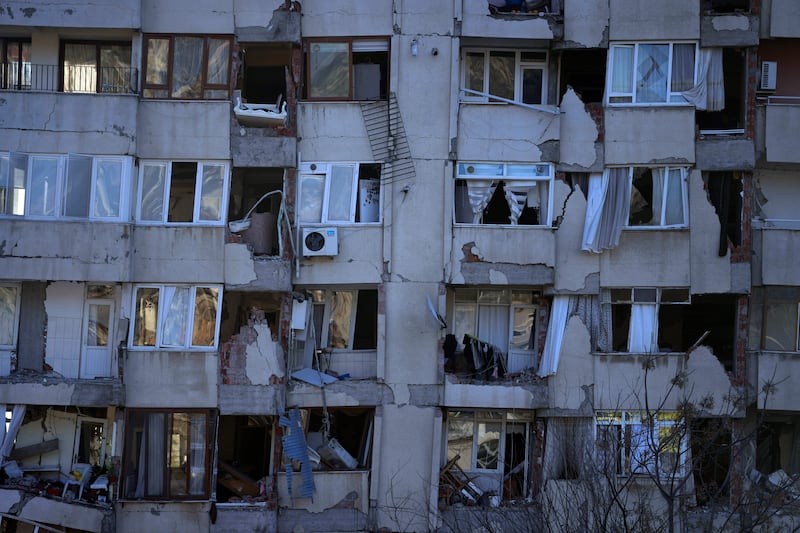Follow the latest on the earthquake in Turkey
In any city, night time offers a different perspective. Lights come on and streets take a different shape. But in the ruined city of Antakya, the darkness brings only terror.
The city in Turkey's southern Hatay region is among the worst hit by the powerful 7.8-magnitude earthquake that shook Turkey and Syria on Monday, killing more than 22,000.
The scale of the destruction seems to belong to an apocalyptic movie. Buildings have collapsed in ways that seem to defy the laws of physics, creating odd, ghoulish shapes.
Some look like a crushed accordion, while others have crumbled into a thousand pieces.
A house alarmingly leans on one side; a few metres away, another has completely fallen over as if it has tripped over the street.
None of the buildings in Antakya are habitable: even those standing are totally empty, without electricity and water.
Before the earthquake struck, the city was a bustling place of safety for hundreds of thousands of refugees fleeing civil war just 12 miles away in Syria.
Known as Antioch in ancient times, Antakya is a melting pot of cultures, food and languages, but today its residents sleep in the open air or makeshift camps.
Drone footage shows scale of destruction in Turkey after deadly earthquake
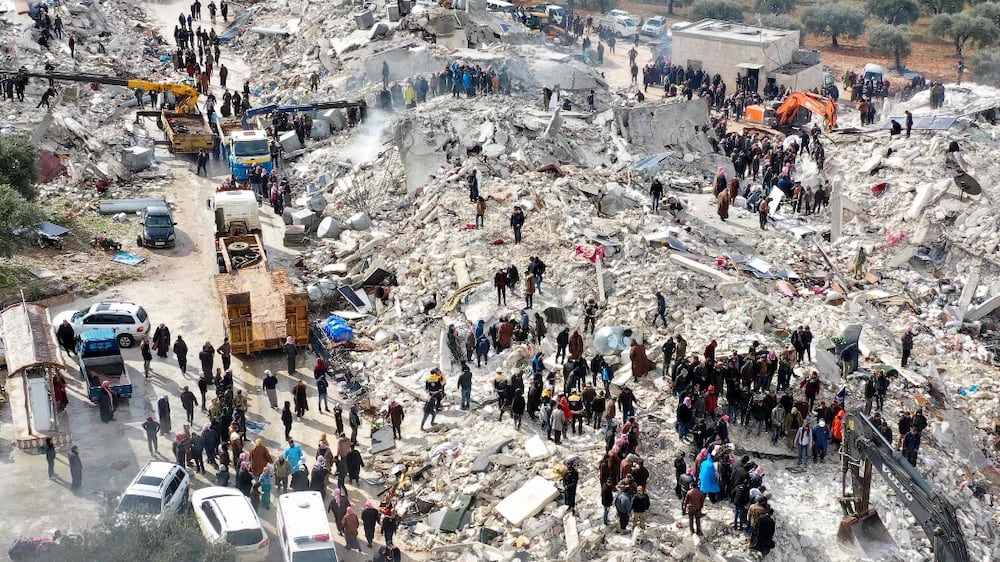
As darkness falls, the absence of artificial light sources and suspended ochre dust create a surreal feeling.
Traffic is chaotic; badly damaged roads are filled with cars, buses and ambulances, their wailing sirens relentlessly pierce through the noises of rescues in progress.
Only occasional fires light up the pitch-black city, releasing an acrid stench that stays with you for hours.
Around the fires huddle those made homeless by the disaster, dressed in thick clothing to fend off the worst of the freezing temperatures.
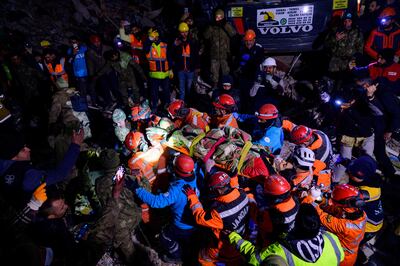
Many families have yet to leave the city, sleeping in their cars or even directly on the ground.
The streets are also full of volunteers. Enshe, 27, came all the way from Istanbul to take part in the emergency assistance. Taking a break, he sits round a fire with friends.
“Antakya was such a beautiful city and now there is nothing left, people have nowhere to stay,” he said.
“I don’t care about sleeping”, he said, adding that he plans to stay at least a week.
Sleep might be tough to come by even if he wanted to get his head down.
“I’ve never seen that many dead bodies,” he said.
Esin, 27, another volunteer, says there are “no words” to describe the situation.
“It breaks my heart, only helping people will allow me to think of something else."
The only other meaningful source of light comes from rescue missions, working through the night to recover bodies days after the disaster. The hope of finding anyone alive is dwindling.
At the site of a collapsed five-storey building, rescuers told The National they had found only one body, a girl of 9.
But illuminated by a harsh industrial light, the crane is still pursuing its work under the dark sky, hoping for a miracle.

